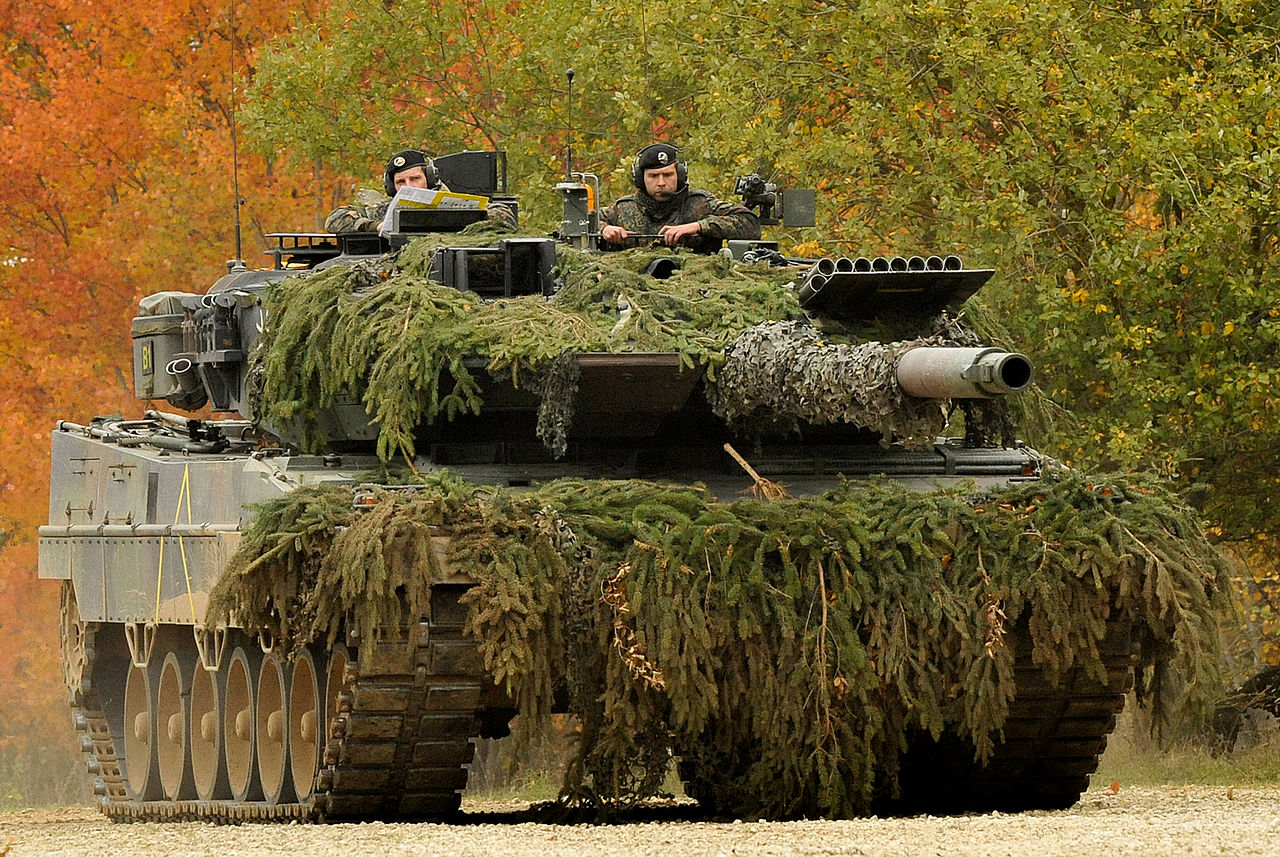Contrary to great expectations, during the summit at the American base in Ramstein, the countries supporting Ukraine militarily did not decide to hand over Western tanks. Despite this, the summit ended with a partial success – writes Mariusz Marszałkowski, editor at BiznesAlert.pl.
The West talks about aid to Ukraine
Many commentators hoped that during the summit in Ramstein the allies would promise to transfer made-in-the-West basic tanks to Ukraine. German Leopards, American Abrams and British Challengers 2 were on top of the list. Ultimately, only the latter model will arrive to Ukraine in the insufficient number of 14 units. Before the summit, Poland and several other countries began a diplomatic battle with Berlin to get it to agree to send German-made machines as part of the support. The Germans, however, are reticent and have so far agreed to an inventory, which is supposed to give an answer to how many and what tanks could be sent to Ukraine in the future. This caused an uproar among dissatisfied stakeholders who called the summit a failure. But is this the right way to describe the outcome of the meeting in Germany? Not necessarily.
The Ramstein summit was not a failure
It was the culmination of January talks and international arrangements on specific forms of support for Ukraine. Even though the final armaments package offered by the summit participants did not include basic tanks such as the Leopards or Abrams, the scale of the aid is unprecedented and breaks existing taboos.
First, the decision to hand over Patriot anti-aircraft and missile systems is even more important than a battalion of Western tanks. Keeping the Ukrainian sky secure will not allow the Russians to use their air force whose main goal should be to soften Ukrainian defenses and pave the way for ground troops in the offensive. The anticipated Russian offensive has no chance of victory in the long term without air support. In total, three Patriot batteries from the USA, Germany and the Netherlands are to go to Ukraine. In addition, more NASAMS and IRIS-T anti-aircraft systems are to be delivered by the Dnieper. Until a few months ago, the supply of modern Western-made anti-aircraft kits was a taboo topic in talks about the transfer of military equipment. Today, after the declarations of a number of countries about further deliveries of such systems, few people remember about it.
Secondly, the decision was made to hand over armored combat vehicles to Ukraine. More than 100 M2A2 Bradley infantry fighting vehicles (IFV) are to be delivered from the USA, and more than 40 Marders will arrive from Germany. These vehicles will be of significant support to the Ukrainian armed forces in defensive and offensive operations, and will introduce a completely new quality compared to the previously used BMP-1 and BMP-2. It can also be assumed that the promised vehicles will not be the last, and any future packages will offer even more of them. Why are they important? Until now, Western countries have been sticking to providing light tactical vehicles, such as MRAP and Turkish KIRPI, which by nature are not fully suitable for offensive operations. They are poorly armored and poorly armed, usually with 12.7 mm machine guns. On the other hand, IFVs are armed with a caliber of 20 mm in the case of Marders and 25 mm in the case of M2A2s. In addition, the latter are equipped with dual-launcher guided missiles TOW, which are also included in the package of weapons transferred from the United States. These missiles will significantly increase the ability to destroy armored targets.
Tanks are not the be all and end all
So what about the tanks? Should they be included in the support package or does their lack mean the January talks failed? It is necessary to look at this aspect from a broader perspective. Ukraine suffers from a shortage of modern tanks, but there may be at least a few problems with their adaptation. From logistics, through spare parts, to crew training. Two specific pieces of information can be drawn from the news about the summit. The first is that new tank crews will start training on Leopards in Germany and Poland. The second is the Polish declaration on the transfer of another batch of T-72 tanks and BWP-1 vehicles in an amount that is fit for an entire mechanized bridgade. This means from 60 to even over 100 additional tanks. Deliveries of T-72s from the Czech Republic, ordered in November by the US and the Netherlands, are also still ongoing. In addition, Morocco intends to give Ukraine a batch of about 30 tanks through an intermediary in the Czech Republic. These decisions mean that armored equipment with which the Ukrainian soldiers are familiar is still coming. On top of that they will be trained to use British Challengers and German Leopards. If a decision on transferring Leopards was made today, would it have an immediate impact on the military operation? No. Thanks to the deliveries of the T-72, the potential of the Ukrainian armored forces is maintained at a similar level. Once the Ukrainian tank crews complete their training on Western equipment, it will be possible to transfer the tanks quickly. The decision to start the training soon probably results from the decision that these tanks will be provided in the near future in a way that makes their use as efficient as possible.
Of course, one can discuss the motivation behind stopping the transfer of the tanks today. Undoubtedly, one of the factors may be business issues. The United States has declared that it was ready to hand over its Abrams tanks to allies who decide to give Ukraine Leopards. Of course, the Germans don’t like it. Handing over the Leopards would mean driving them out and replacing them with American Abrams tanks, which from a business perspective would be a failure for the Germans.
What’s next for the tanks for Ukraine?
The topic of Western tanks for Ukraine is much more complicated than it may seem at first glance. This is not just a question of support, but an aspect of a much broader game, which may determine the very future of the arms sector of individual states after the war. The ambiguous, even pro-Russian attitude of some countries, such as Switzerland blocking the supply of ammunition to German Cheetahs or Spanish Aspide batteries, or the Israeli veto on the supply of anti-tank weapons, may cause significant reshuffles in the world arms market in the coming years. Unfortunately, the indirect victims of this newly forged world are the Ukrainians, who needed the military equipment already yesterday.









